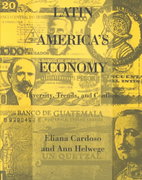Question
The classic intro textbook money multiplier M=1/rr where rr is the required reserve ratio. In March, the US Federal Reserve lowered the required reserve ratio
The classic intro textbook money multiplier M=1/rr where rr is the required reserve ratio. In March, the US Federal Reserve lowered the required reserve ratio to zero. What does that imply that the money multiplier should be using the intro textbook formula?
A. 0.1
B. one
C. infinity
D. Ten
E. Zero
F. 0.01
Using your answer to the previous question (assume that what you got on the first question was indeed the true money multiplier), what would happen if you found $100 in your couch cushions and deposited it in the bank?
A. the US money supply would become zero dollars
B. the US money supply would increase by one hundred dollars
C. the US money supply would decrease by infinity dollars
D. the US money supply would increase by zero dollars
E. the US money supply would increase by one dollar
F. the US money supply would increase by infinity dollars
The first two questions/answers may seem wrong and silly to you. The intro textbook money multiplier relies on two assumptions to be true: that banks lend out all the money that they legally can (i.e. they hold no excess reserves) and people deposit all of their money in the bank immediately (i.e. people hold no money in cash or coin).
D.
Step by Step Solution
There are 3 Steps involved in it
Step: 1

Get Instant Access to Expert-Tailored Solutions
See step-by-step solutions with expert insights and AI powered tools for academic success
Step: 2

Step: 3

Ace Your Homework with AI
Get the answers you need in no time with our AI-driven, step-by-step assistance
Get Started


